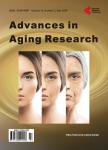Dubai Primary Health Care Centers Conformation to WHO Age-Friendly Primary Healthcare Recommendations
Dubai Primary Health Care Centers Conformation to WHO Age-Friendly Primary Healthcare Recommendations作者机构:Elderly Care Unit Health Affairs Department Primary Health Care Services Sector Dubai Health Authority Dubai United Arab Emirates Primary Health Care Services Sector Dubai Health Authority Dubai United Arab Emirates Health Affairs Department Primary Health Care Services Sector Dubai Health Authority Dubai United Arab Emirates Health Centres Department Primary Health Care Services Sector Dubai Health Authority Dubai United Arab Emirates
出 版 物:《Advances in Aging Research》 (老年问题研究(英文))
年 卷 期:2017年第6卷第6期
页 面:83-92页
学科分类:1002[医学-临床医学] 100214[医学-肿瘤学] 10[医学]
主 题:World Health Organization (WHO) Primary Health Care (PHC) Elderly Care Unit Dubai Health Authority (DHA)
摘 要:The WHO project for conforming PHC to requirements of all age groups has resulted in publishing a toolkit for age-friendly PHC in 2008. The toolkit included checklists for physical environment and signage properties. This study matched the current physical environment properties of DHA’s PHC Health Centers against WHO’s recommendations. This is a cross sectional descriptive study that included visits to all 12 Primary Health Care Centers in Dubai city during August-September 2016 with the objective to assess the degree of fulfillment of current properties of Health Centers building to the recommendations of WHO as listed in “Age-friendly Primary Health Care Centres Toolkit [1]. The study found that 81.86% of physical environment properties are matching the recommendation of WHO, while signage matching was 44.6%. The study concluded that most PHC properties have a physical design that met WHO’s recommendations. The two major deviations were accessibility by public transportations and presence of grab bars. Factors that had a significant impact on design were compliance with multiple international and local standards, the availability of private cars, and the availability of wheel chairs. Signage in DHA’s health centers followed a central plan that differed from WHO’s recommendations.



